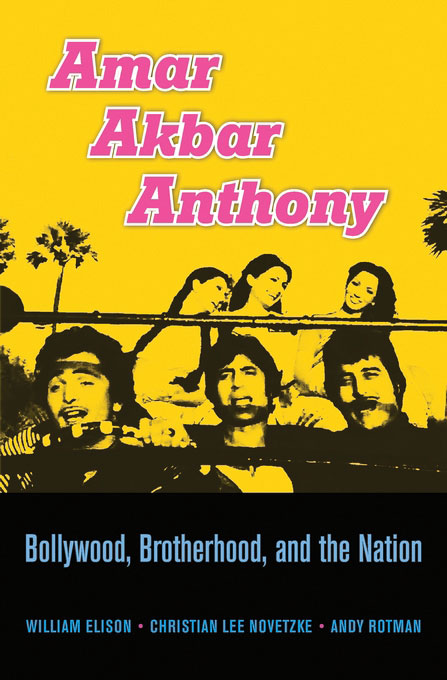
Amar Akbar Anthony: Bollywood, Brotherhood, and the Nation
Authors: William Ellison, Christian Lee Novetzke, and Andy Rotman
(Harvard University Press)
Anyone with any interest in popular Indian films has seen or heard of director Manmohan Desai’s 1977 megahit Amar Akbar Anthony. The film was a quintessential masala movie with multiple characters, an ensemble cast, crisscrossing plot lines and stories, and of course the hit songs. The story follows the antics of three brothers separated in childhood, from each other as well as their parents, who were raised in three different religious households. It is the story of the diversity, traditions, and religions of India, all mixed into a colorful mishmash by Manmohan Desai.
In this book, three professors from different universities and backgrounds unfurl the beloved movie and tie it into the greater story of India. The authors review and analyze one of the biggest hits of Bollywood, where one of the prime themes is religious harmony. This book is not simply a condensed narrative of the movie; the authors take great care in using the film’s plot lines and characters and unfold them into the greater idea of India. Secularism, creeping modernity, communalism, and community are all interwoven in their assessment of the three main characters and their mother “Maa,” who represents a compendium of the greater Mother India.
The authors offer a multi-layered interpretation of the film’s symbolism, idea of social harmony and post-independence secular democracy of India, embedded with the minutiae of all things India.
The book analyzes the film in ways most people who have watched and loved the film have likely never thought about. The deeper symbolism and India’s secular democracy go hand in hand with the film, which is given a multi-perspective here. It’s a film that celebrates India’s diversity without making noise about it. The characters all simply get along on a secular level.
This book is clearly a labor of love, where American academics spend a lot of time analyzing a single Hindi film. The authors are clearly fans of Hindi films and experts of India’s web of myriad religions, traditions and beliefs. They, like the film, don’t take everything too seriously, but at the same time remind readers of the believable and unbelievable mores and machinations of the film. They are scholars, of course, but fans as well. Read the book, it is as fast-paced as the movie, and then watch the film again. Insights that were once hidden in the songs, romance, comedy and action will reveal themselves.
Samir Shukla is the Editor of Saathee Magazine.



